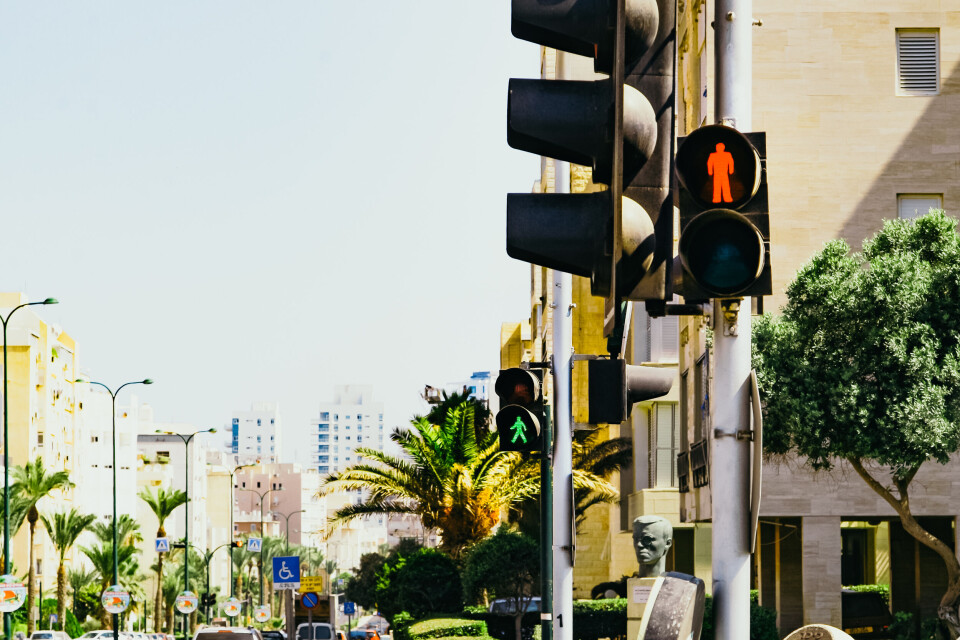-
French ski resorts report excellent Christmas despite less snow than last year
Bookings are up and non-snow related activities are also on the rise
-
American celebrity jeweller robbed of ‘more than €1m’ at French Riviera Airbnb
Jewellery and cash stolen from rental property where Chris Aire was staying
-
New 2026 civic tests in France: 50 example questions in French
Candidates must score 80% on tests to pass
Yellow man to be tested as France bids to improve pedestrian safety
It will be trialled in several cities across France

Cities across France will implement a new ‘clearance phase’ on pedestrian traffic lights – to improve safety when crossing roads.
The two-year trial will see the introduction of a yellow pedestrian signal at major crossings to limit confusion between drivers and walkers when both traffic and walking lights are red.
Almost 500 pedestrians died and more than 2,000 were injured in 2022, according to provisional road accident reports, making up around 15% of all road fatalities.
The aim of the yellow man is "to improve the safety of pedestrians approaching a road, by improving motorists' understanding of the clearance time and pedestrians' compliance with the red light”, said the government order issued in April.
Functions like an amber traffic light
Nestled between the familiar ‘walking’ green and ‘stationary’ red man on pedestrian traffic lights, the new yellow man will appear, making them similar to their three-coloured road traffic counterparts.
Its function is similar to the yellow light for cars – to signal they will soon switch to red.
People who have already begun crossing a road can continue, but those who arrive once the light starts flashing cannot start to cross.
The trial will see both static and flashing versions of the yellow pedestrian light to see if one system is more effective than another, and road traffic lights will always be red as the pedestrian light is yellow.
France had a flashing green light to indicate something similar for pedestrian crossings, but this was withdrawn in 1991.
Read more: New type of traffic light aims to improve cyclist safety in France
Seeks to limit fatalities
The introduction of the light is to help clear up confusion when lights for both drivers and pedestrians are red.
“When the little man [for pedestrians] turns red, the light [for cars] stays red. There is a lack of understanding on the part of [drivers] who consider that when the little man turns red, they have the right to pass, even though their traffic light is red,” said Anne Lavaud, of the Prévention Routière.
“The period where everything is red creates a conflict zone,” she added.
A study of 2015 road fatalities by CEREMA (Centre d’études et d’expertise sur les risques, l’environnement, la mobilité et l’aménagement) says up to 25% of fatalities on the road involve a pedestrian crossing “in confidence when at a pedestrian crossing.”
There are concerns, however, that pedestrians will mimic some drivers when seeing the yellow light and speed up to cross before the driver’s light turns green, increasing the risk of accidents.
Originally, seven cities were set to take part in the trial. But according to FranceInfo, Versailles has withdrawn from the project, reportedly due to the costs involved.
The locations of the lights in the other six cities can be found here:
Metz: Rue François Mitterrand and Boulevard Solidarité
Nancy: The intersection of rue Raymond Poincaré with Rue Saint Léon and Rue Mazagran
Nantes: The intersection of Rue de Strasbourg and Rue du Général Leclerc de Hauteclocque and at the intersection of Rue des Martyrs Nantais de la Résistance and Boulevard Vincent Gâche
Nice: The intersection of Rue Barla and Rue Bavastro and at the intersection of Boulevard Général Louis Delfino and Rue Auguste Gal
Strasbourg: Route de l'Hôpital, Allée de la Robertsau and Avenue du Rhin
Toulouse: The Roosevelt - Strasbourg intersection and at the Place Esquirol - rue de Metz intersection
Related articles
Mixed bag as our readers respond to debate on tests for older drivers
Work on new controversial motorway in southern France ‘has begun’
























